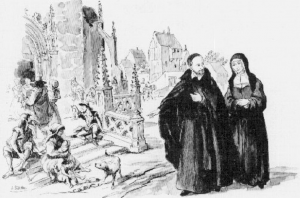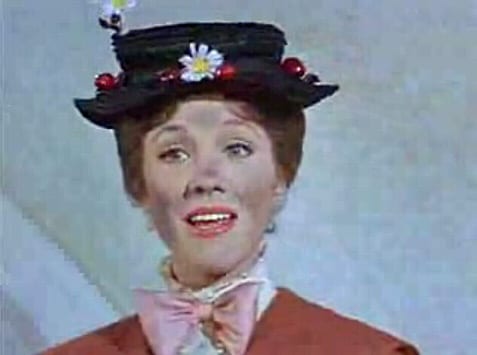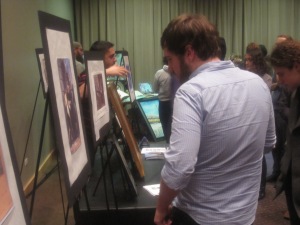Faith on the Hill: The Religious Diversity of the 113th Congress – Pew Forum on Religion & Public Life

ANALYSIS November 16, 2012
The newly elected, 113th Congress includes the first Buddhist to serve in the Senate, the first Hindu to serve in either chamber and the first member of Congress to describe her religion as “none,” continuing a gradual increase in religious diversity that mirrors trends in the country as a whole. While Congress remains majority Protestant, the institution is far less so today than it was 50 years ago, when nearly three-quarters of the members belonged to Protestant denominations.
Catholics have seen the biggest gains among the 530 seats in the new Congress that have been decided as of Nov. 16. So far, Catholics have picked up five seats, for a total of 161, raising their share to just over 30%.1 The biggest decline is among Jews, who have been elected to 32 seats (6%), seven fewer than in the 112th Congress, where Jews held 39 seats (7%).2 Mormons continue to hold 15 seats (about 3%), the same as in the previous Congress.
Protestants also appear likely to continue to occupy about the same proportion of seats (56%) as in the 112th Congress (57%). In addition, the Protestant share of each political party in the new Congress is about the same as in the 112th; roughly seven-in-ten Republicans are Protestants, compared with fewer than half of Democrats. However, the members elected for the first time in 2012 are less Protestant than the group first elected in 2010; 48% are Protestant, compared with 59% of those elected for the first time in 2010.
Protestants, Catholics and Jews each make up a greater percentage of the members of Congress than of all U.S. adults. The same is true for some sub-groups of Protestants, such as Episcopalians and Presbyterians. By contrast, Pentecostals are a much smaller percentage of Congress than of the general public. Due in part to electoral gains in recent years, Buddhists, Muslims and Hindus now are represented in Congress in closer proportion to their numbers in the U.S. adult population. But some small religious groups, such as Jehovah’s Witnesses, are not represented at all in Congress.
Perhaps the greatest disparity, however, is between the percentage of U.S. adults and the percentage of members of Congress who do not identify with any particular religion. About one-in-five U.S. adults describe themselves as atheist, agnostic or “nothing in particular” – a group sometimes collectively called the “nones.” But only one member of the new Congress, Kyrsten Sinema (D-Ariz.), is religiously unaffiliated, according to information gathered by CQ Roll Call. Sinema is the first member of Congress to publicly describe her religion as “none,” though 10 other members of the 113th Congress (about 2%) do not specify a religious affiliation, up from six members (about 1%) of the previous Congress.3 This is about the same as the percentage of U.S. adults in Pew Research Center surveys who say that they don’t know, or refuse to specify, their faith (about 2%).

These are some of the findings from a new analysis by the Pew Research Center’s Forum on Religion & Public Life of congressional data compiled primarily by CQ Roll Call. The analysis compares the religious affiliations of members of the new Congress with Pew Research Center survey data on the U.S. public. CQ Roll Call gathered information on the religious affiliations of members of Congress through questionnaires and follow-up phone calls to members’ and candidates’ offices, and the Pew Forum supplemented this with additional research.

Congress’ First Hindu and Other Firsts
In January 2013, when the 113th Congress is sworn in, Hawaii Democrat Tulsi Gabbard will become the first Hindu in either the House of Representatives or the Senate.4 Gabbard, an Iraq War veteran who has served on the Honolulu City Council and in the Hawaii state legislature, will represent Hawaii’s 2nd congressional district. Gabbard will take over the seat held in the 112th Congress by Rep. Mazie K. Hirono (D), who on Nov. 6 became the first Buddhist elected to the Senate.
In 2006, Hirono and Rep. Hank Johnson (D-Ga.) became the first Buddhists to be elected to the House. Four years later, they were joined by a third Buddhist member, Colleen Hanabusa (D-Hawaii). Johnson and Hanabusa were re-elected to serve in the 113th Congress.
The first Muslim to serve in either the House or the Senate, Rep. Keith Ellison (D-Minn.), was elected in 2006. Rep. Andre Carson (D-Ind.) became the second Muslim in Congress when he won a special election in 2008. In 2012, Michigan Democrat Syed Taj lost his bid to become the third Muslim member of Congress. Ellison and Carson were re-elected.
Members of other small religious groups started serving in Congress more than a century ago. The first Jewish member arrived in 1845, when Lewis Charles Levin of the American Party began representing Pennsylvania in the House. The first Mormon in Congress, John Milton Bernhisel, began serving in 1851, after Utah was officially recognized as a territory. California Democrat Dalip Singh Saund, the first and so far only Sikh to serve in Congress, served three terms starting in 1957.
Rep. Pete Stark (D-Calif.), a Unitarian who joined Congress in 1973, became the first member of Congress to publicly declare, in 2007, that he does not believe in a Supreme Being. He lost his re-election bid in 2012.
The New, 113th Congress
Of the 530 members of the new Congress whose races have been decided as of Nov. 16, 299 are Protestant, which is about the same percentage (56%) as in the 112th Congress (57%) and higher than the share of Protestants in the U.S. adult population (48%). But the proportion of Protestants in Congress has been in gradual decline for decades, and the number elected this year may end up being lower than the number in the previous Congress (307), even if the difference in percentage terms is slight.

There have been modest changes in congressional representation within Protestant denominational families. Most notably, in the new Congress the number of Baptists has increased by six and the number of Methodists has decreased by four. Nonetheless, these two groups remain the largest Protestant sub-groups, as in the 112th Congress. The percentage of Methodists is slightly higher in Congress (about 9%) than in the general public (around 6%); the reverse is true for Baptists (14% of Congress and roughly 17% of all adults). The next-largest Protestant groups are Presbyterians and Episcopalians; both are more than five percentage points more numerous in Congress than among the general population.5
Protestants who do not specify a particular denomination (58 members) also comprise a large proportion of Congress (11%). It is unclear what percentage of these unspecified Protestants are affiliated with nondenominational churches; just three members of the 113th Congress specify that they belong to nondenominational Protestant churches.
Meanwhile, the number of Catholics in the 113th Congress has risen to 161 (as of Nov. 16), up from 156 in the previously elected body. If Protestants are not counted together but as separate denominations, then Catholics are the largest religious group in the 113th Congress. They represent more than 30% of the members in the 113th, compared with 29% in the previous Congress. About a fifth of the U.S. adult population (22%) is Catholic.
The number of Jewish members of Congress decreased from 39 to 32. There are 10 Jewish senators and 22 Jewish members of the House of Representatives in the 113th Congress. Jews now make up 6% of Congress (down from 7% in the 112th Congress). But this is still about three times the Jewish share of the general population (2%).
The number of Mormons in the 113th Congress (15) is the same as in the 112th, and they are about as prevalent in Congress (almost 3%) as in the public at large (2%).
As previously mentioned, some other small religious groups are about as numerically well-represented on Capitol Hill as in the general population. Muslims account for less than 1% of the U.S. adult population and make up 0.4% of Congress. Similarly, Buddhists and Hindus (also less than 1% of the U.S. adult population) make up 0.6% and 0.2% of Congress, respectively. Orthodox Christians also make up less than 1% of U.S. adults and comprise 0.9% of Congress. There are no Jehovah’s Witnesses in Congress; the group has a relatively small presence (less than 1%) in the U.S. population as a whole.
Differences by Chamber
Several religious groups are represented in roughly equal proportions in both houses of Congress, including Methodists (9% in each) and Lutherans (4% in the House, 5% in the Senate).
However, a few religious groups continue to have lopsided representation in one chamber or the other. For example, Jews make up 10% of the new Senate but 5% of the House. Likewise, Mormons make up 7% of the Senate and 2% of the House. Presbyterians make up more than twice as much of the Senate as the House (16% vs. 6%). The share of Baptists, by contrast, is greater in the House (15%) than in the Senate (9%), as is the percentage of Episcopalians (8% vs. 4%).

Differences by Party Affiliation
Overall, 48% of the members of the new Congress are Democrats, and 52% are Republicans.
Looking at the partisan breakdown of the various religious groups, Lutherans are divided 50%-50% between the parties. The other sizable Protestant groups (Baptists, Methodists, Presbyterians and Episcopalians) – as well as Protestants as a whole – have more Republicans than Democrats. The same is true for Mormons; 12 of the 15 Mormon members of the new Congress are Republicans. Catholics are slightly tilted toward the Democrats (57%-43%). Jewish members are mostly Democratic (97%); in fact, House Majority Leader Eric Cantor is the only Jewish Republican in Congress. The other non-Christian groups (Buddhists, Muslims and Hindus) are comprised exclusively of Democrats. All the members of Congress who did not specify a religion are also Democrats.
Looking at the religious breakdown of the political parties, 69% of congressional Republicans are Protestant, while fewer than half of Democrats (43%) belong to Protestant denominational families. (This includes newly elected independent Angus King of Maine, who has said he will caucus with Senate Democrats.) On the other hand, Catholics make up a greater share of Democratic members (36%) than they do of GOP members (25%). And while Jews make up 12% of all congressional Democrats (including one independent who generally caucuses with the Democrats, Sen. Bernie Sanders of Vermont), they account for less than 1% of congressional Republicans.

First-Time Members
The 81 members who were elected for the first time in 2012 are less Protestant than the 112 first-time members elected in 2010. In the 112th Congress, about six-in-ten members of the congressional freshman class were Protestant (59%), but that figure dipped to less than 50% in the most recent election. The percentage of freshman members who are Baptist and Presbyterian also decreased (from 16% to 10% for Baptists and from 8% to 4% for Presbyterians).
Catholics comprise a higher percentage of first-time members (37%) than of incumbent members (29%). Likewise, unspecified Protestants make up a greater percentage of freshman members (19%) than of incumbents (10%).
The reverse is true for most other groups. About 3% of the first-time members are Jewish, compared with 7% of incumbents. Presbyterians also make up a somewhat larger share of incumbents (9%) than of freshman members (4%). Otherwise, there are relatively small differences in religious affiliation between first-time and incumbent members.

Looking Back
In many ways, the changes in the religious makeup of Congress during the last half-century mirror broader changes in American society. Congress, like the nation as a whole, has become much less Protestant and more religiously diverse. The number of Protestants in Congress has dropped from three-quarters (75%) in 1961 to 56% today, which roughly tracks with broader religious demographic trends during this period. As recently as the 1980s, General Social Surveys found that about six-in-ten Americans identified themselves as Protestants. In aggregated surveys conducted by the Pew Research Center in 2012 and reported in the Pew Forum’s October 2012 report “‘Nones’ on the Rise,” the share of self-identified Protestants has dipped to just under half (48%).
Likewise, many of the major Protestant denominational families have lost ground in Congress in the past 50 years. Methodists, who made up nearly one-in-five members (18%) of the 87th Congress, which was seated in 1961, make up 9% of the 113th Congress. Some other Protestant denominational families also have seen a decline in their numerical representation in Congress. For example, Episcopalians have gone from 12% to 7% and Congregationalists from 5% to less than 1% during this period.
A few Protestant groups have fared somewhat better, however. From 1961 to today, the proportion of Baptists in Congress has increased slightly from 12% to 14%, and the Lutheran share has stayed roughly the same (around 4%).
Meanwhile, other religious groups have seen their share of congressional seats grow, in some cases dramatically. Catholics, for instance, have gone from 19% of the congressional membership in 1961 to 30% today. The percentage of Jewish members of Congress has risen from 2% in 1961 to 6% today.

View a PDF listing the religious affiliation of each member of the 113th Congress.
This analysis was written by Tracy Miller, Editor, Pew Research Center’s Forum on Religion & Public Life.
Footnotes:
1 This analysis is based on the 530 races that have been called as of Nov. 16, 2012. It excludes four races in which votes are still being counted (Ariz.-02, Calif.-52, Fla.-18 and N.C.-07) as well as the race in Louisiana’s 3rd district, which will be decided in a Dec. 3 runoff. All the candidates in these races are either Protestant or Catholic. Because each additional seat represents just 0.2% of the full Congress, the percentage totals for Protestants and Catholics are unlikely to shift by more than one percentage point. (return to text)
2 The Jewish figures appear to be final because there are no Jewish candidates in the five races that have yet to be determined. (return to text)
3 Tammy Baldwin, a Democratic congresswoman from Wisconsin who was elected to the Senate in 2012, was described in a recent New York Times article as someone who “does not discuss her religiosity.” In response to queries from CQ Roll Call, Baldwin’s office has described her religion as “unspecified,” and she is included in this analysis among the 10 members who did not specify a religion. If, instead, Baldwin were counted with Sinema as unaffiliated (or “none”), they would comprise about 0.4% of the new Congress. This would still be well below the nearly 20% of all U.S. adults who say they are unaffiliated, based on aggregated data from surveys conducted by the Pew Research Center for the People & the Press in 2012 and reported in the Pew Forum’s October 2012 report, “‘Nones’ on the Rise.” (return to text)
4 Ami Bera, who was elected for the first time in 2012 to represent California’s 7th congressional district, was raised Hindu but now identifies as a Unitarian Universalist. He will be the only Unitarian Universalist in the 113th Congress. (return to text)
5 This analysis counts Christian Scientists as a Protestant denominational family in both the 112th and 113th Congresses because that is how they are counted in the Pew Research Center figures used for the general public. In previous Pew Forum analyses of the religious affiliations of the members of Congress, Christian Scientists were categorized as “Other Christians” because that is how they were counted in the general public numbers at that time.(return to text)
Photo Credit: © Wes Thompson/Corbis
THE PEW FORUM ON RELIGION AND PUBLIC LIFE
 “I would truly like to know how you really are.”
“I would truly like to know how you really are.”













